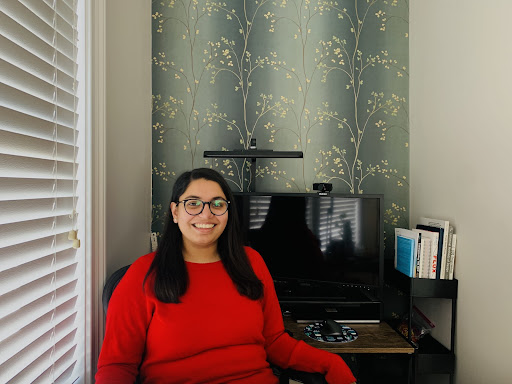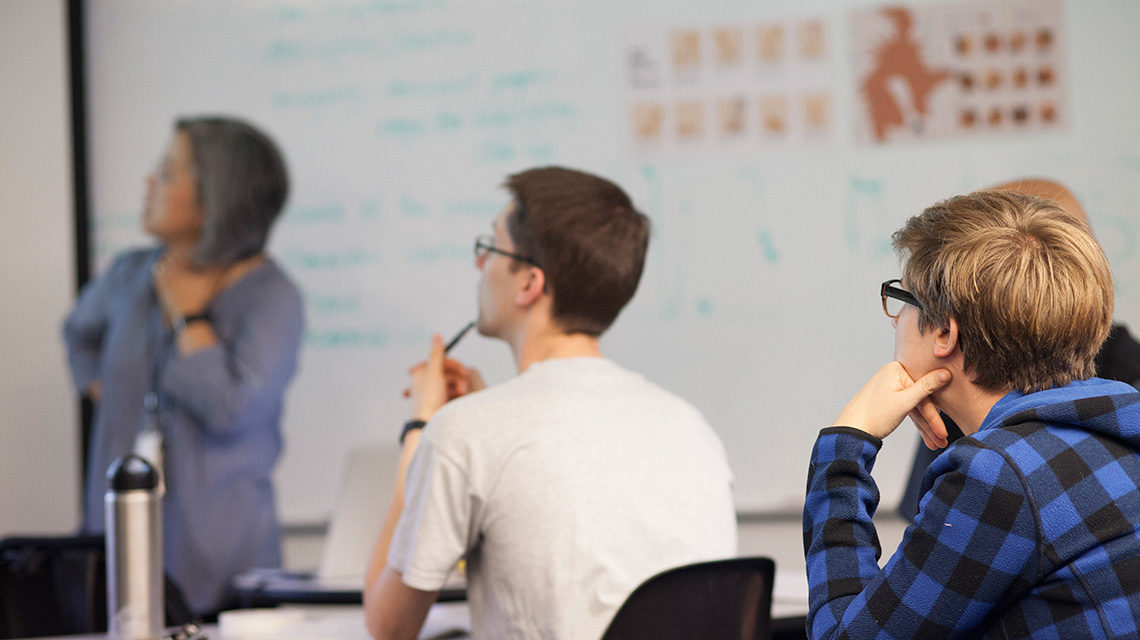Asmina Shaikh, Senior Behavioral Designer at McKinsey & Company
March 4, 2022

Asmina Shaikh (MDes 2017) works in McKinsey’s Technology and Digital Change function. She talks to current ID student Sandhini Ghodeshwar (MDes 2023) about creating go-to-market strategies and behavioral change programs to foster internal adoption of digital solutions. This interview has been edited for length and clarity.
What led you to ID?
I had always been curious about understanding design methodologies and processes in depth, but a lot of my [undergraduate] program focused on developing hard skills—I went to National Institute of Design (NID), Ahmedabad, India and my major was Graphic Design.
How did you arrive at McKinsey?
I always thought I’d end up working in the healthcare sector or in social innovation because of the projects I had worked on at ID. One of the major constraints I had put on myself looking for a job after graduating from ID was that I wanted to work in a non-design setting. I really wanted to work with people who were not so exposed to design.
The opportunity at McKinsey was a communication design position, something that I was good at, but not what I wanted to do. Through the interview process I was lucky enough to talk with the director of the team. She had a really strong vision of what the role needed, that is, the skills of a user researcher and design strategist.
This, I thought, was a great and challenging opportunity to step into and try to learn and explore how to bring my skills to a team where nobody really understood yet what I did and why it was useful.
What are your current responsibilities?
McKinsey’s Technology and Digital Change function is responsible for product adoption and internal marketing of tech products for McKinsey employees.
Part of my responsibilities include creating strategic plans and helping the team execute them, but also designing marketing artifacts and other support mechanisms for internal tools and products.
How would you define behavioral design?
To someone who has been exposed to the world of design, behavioral design is a new and emerging field that combines design thinking methodologies and behavioral science. It provides a toolkit and a set of methods to understand human behavior more deeply, and in a way that is sustainable and reusable.
Behavioral science offers a structured way to think about human behavior. It codifies human behavior, which can only help in the world of design. The better we understand our users, the better we can design for them.
Why is behavioral design important today?
Currently there’s a lot of focus on automation. The speed at which humans are forced to make decisions is only increasing and we’re automating a lot of the tasks that used to be manual. That makes the few decisions that humans still have to make even more important.
Understanding how people make decisions and under what kind of situations people make good or bad decisions is part of behavioral design work.
What’s your favorite aspect about your role? And what’s the most challenging part?
Being able to experiment and bring to the table more of what I know, care about, and am passionate about in my work is what keeps me going.
Something else that I find super exciting is that I’m constantly challenged to break out of my shell as a designer to explain concepts to people in the language that they understand best.
Being able to teach somebody what you know forces you to articulate what you know well and that reinforces your own understanding of your expertise and what you know about.
In addition, using behavioral science can be challenging ethically. Pushing back on business needs can be hard, especially when you’re talking to people who are high up in the ranks and may not agree with you. But at the end of the day, I consider it my duty to advocate for users and I make sure to voice my concerns with valid explanations.
How does your role utilize what you learned at ID?
The experience of interacting with people coming from all walks of life and different backgrounds united with the aim of learning design methods and processes gave me a window to think about practicing design with non-designers. It helped me get out of my designer mentality and pushed me to think and talk in a way similar to the person I’m talking to. This is something that I have to do every day.
I’m grateful to my mentors, friends, faculty and advisors at ID who motivated me to get out of my comfort zone and try the things that I found hard.
What experience do you suggest ID students should gain now in order to lead in the future?
Get exposed to different perspectives. Think about how people other than designers look at certain problems or situations. One of the most crucial things that a person can practice at ID is learning to talk about design stuff with people who don’t know what design is.
Be ready to talk about what you want in life as well, apart from your role as a designer, because this stuff matters when you apply for a job. When hiring, people look at you as a human being rather than just a designer.
Pace yourself. You can’t do everything at ID. You need to give time to yourself to think about what you’re interested in and ID can help you do that.
How can students learn more about behavioral design and put it into practice?
First and foremost, take Ruth’s class and build a relationship with her. She’s been in this space for a very long time and is a very approachable person—an amazing resource for anyone at ID.
If you’re serious about building a career in this space, then read and engage. Think about whether what you’ve read was useful and have a point of view about it. The quicker you pick up on this the better, since the field is very young and ripe with opportunities for you to set a lot of ways in which this work can be and should be done. If you’re interested in building a career at McKinsey, you can visit our Careers site.
Fortunately, the behavioral design community is rather small—so experimenting and putting your work out there and building your network is quite easy.
Watch Asmina, Sandhini, and ID faculty member Ruth Schmidt in a recent conversation on designing decision-making with behavioral design.

